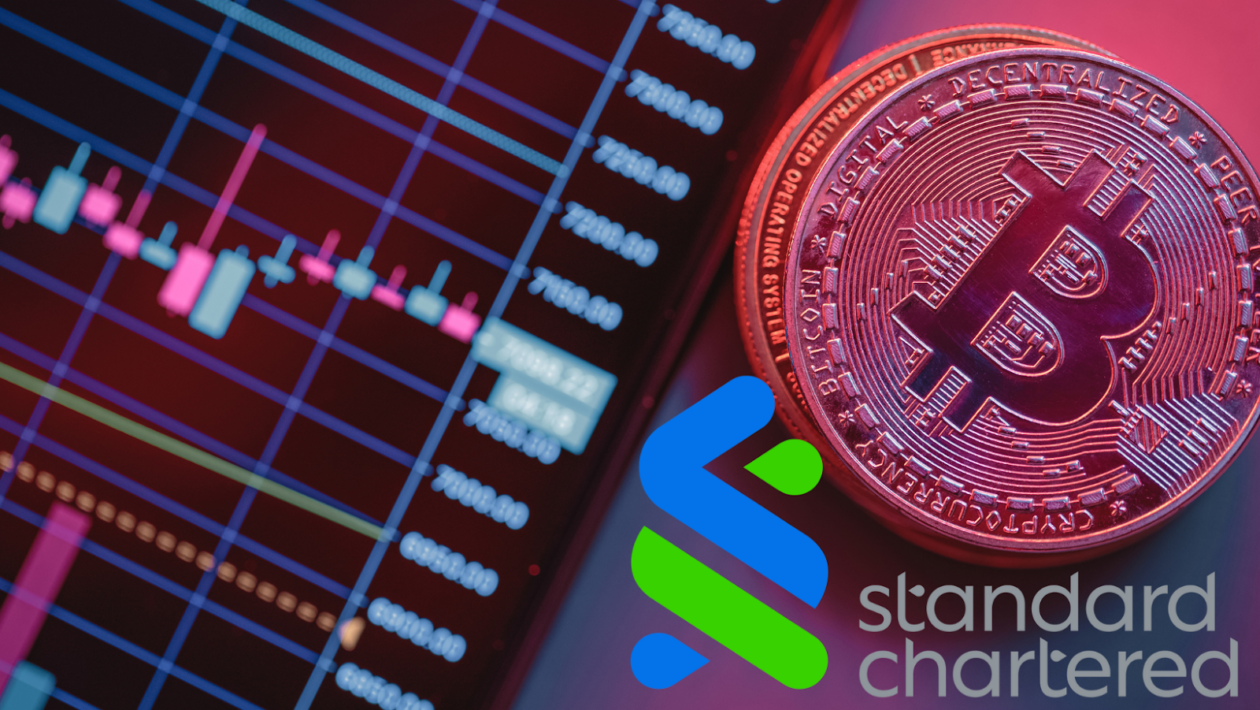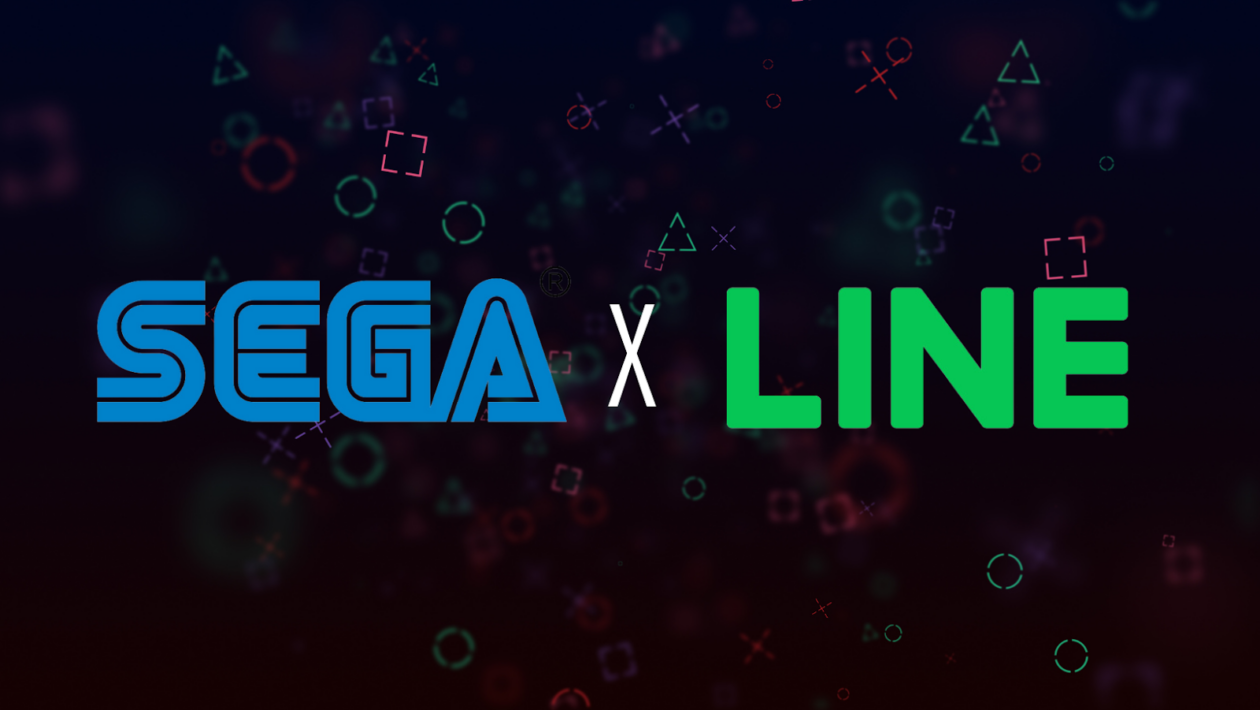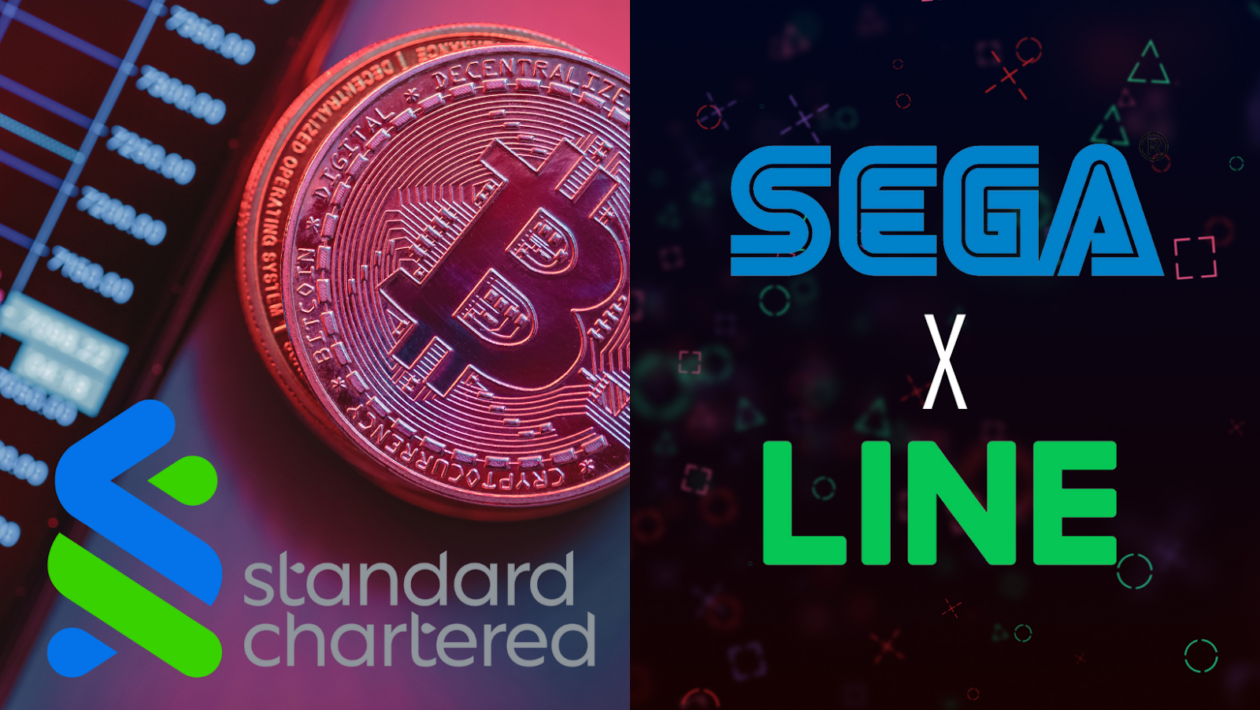In this issue
- Bitcoin at US$120,000: Standard Chartered’s high hopes
- Forkast 500 NFT Index: Another week, another low
- Sega partners Line: From game to blockchain
From the Editor’s Desk
Dear Reader,
Remember the “laser eyes” trend that many Bitcoiners enthusiastically bought into back in 2021? Yes? Well, we’ve been trying to forget it, too.
But this week’s news that Standard Chartered sees BTC potentially soaring to US$120,000 next year brings those memories flooding back.
Given the relatively short time the crypto industry has been in full bloom, banks have managed to chalk up an impressive track record of making dramatic predictions and pronouncements on the price of the original crypto token.
In early 2021, for instance, JPMorgan – despite being headed by noted fixture of the crypto-skeptic punditocracy Jamie Dimon – outdid even the believers, predicting a rise to US$146,000. In late 2020, a leaked report by Citibank predicted an even more extravagant valuation of US$300,000 by December the following year, a figure that would have required BTC’s price to skyrocket 1,775%, or more than 18-fold.
Standard Chartered’s latest call on BTC rests on a logic of supply and demand, one of the bedrocks of established economics. As such, it has a certain degree of merit. However, while that bullish prediction may set hearts racing among long-suffering speculators in the crypto community, it relates only to one token in the space, and is predicated on only a limited number of factors.
Admittedly, BTC’s movements exercise a practically gravitational pull on the rest of the market. Yet even broad shifts in crypto prices are but a single dimension of the increasingly sophisticated digital asset ecosystem that has emerged in the past few years.
BTC may bounce back, and even outperform to live up to the lofty expectations of the latest crop of analysts bold enough to be so bullish. But the damage wrought by the fevered speculation, hype and all-too-foreseeable misery that followed the headiness of 2021 have made the industry grow up quickly, moving its focus to the source of the more demonstrable and enduring value it can create: the spirit of pioneering innovation that animated it in the first place.
It goes without saying that we want to see the crypto market back in the black, but it’s what comes next in the expanding digital asset universe that excites us most.
Until the next time,
Angie Lau,
Founder and Editor-in-Chief
Forkast.News
1. Great expectations

Bitcoin prices could rise to US$50,000 by the end of 2023 and US$120,000 in 2024, U.K. bank Standard Chartered predicted in a Monday research report, an increase from its projection of US$100,000 in April.
- Higher miner profitability per Bitcoin is one of the major factors fueling Standard Chartered’s projection, allowing miners to “sell less while maintaining cash inflows, reducing net BTC supply and pushing BTC prices higher,” Geoff Kendrick, head of foreign exchange and digital assets research at Standard Chartered, wrote in the report.
- Kendrick noted that the 12 largest listed miners — which account for 20% of all global Bitcoin mining — sold 106% of mined Bitcoins in the first quarter of 2023, and estimated the proportion dropped to 100% in the second quarter, thanks to lower mining cost and higher Bitcoin prices that have gained over 85% since the start of the year.
- “If the BTC price rises to around US$50,000, which we expect by end-2023, the share of newly mined being sold should fall to 20-30%. That is a net annual reduction in selling of BTC 250,000 — a large number relative to Bitcoin market turnover,” wrote Kendrick.
- “While predicting the timing of market moves is always tricky, the case for a significant increase in the price of Bitcoin in the foreseeable future is clear,” said Bradley Duke, founder and chief strategy officer of crypto ETP provider ETC Group.
- “With Blackrock filing for a spot Bitcoin ETF in the US, given their past success rate, the belief is that this application is likely to be approved. This will enable massive pent-up demand for Bitcoin in the US and elsewhere to finally be able to flow into the market, and it’s logical that the price of Bitcoin responds in a proportionate manner,” said Duke.
- Bitcoin supply inflow will also be further reduced by the token’s fourth halving event, expected to occur in April or May 2024, which would cut miners’ reward for mining new blocks and verifying transactions by 50%.
- “Prior halving cycles have resulted in significant industry consolidation. This drives down the average cost of production further, increasing average miner profitability,” the report said.
Forkast.Insights | What does it mean?
Standard Chartered’s prediction is contingent on the premise that Bitcoin miners will be able to reduce the amount of freshly mined Bitcoin they put up for sale.
The rationale for this thesis hinges on Bitcoin halving, an in-built feature of the Bitcoin network which cuts the reward miners receive for verifying transactions on the blockchain by 50% approximately every four years. Consequently, this event reduces the inflow of new Bitcoins into the economy. The latest halving event in May 2020 cut miner compensation to 6.25 Bitcoins per block. The next anticipated halving in April or May 2024 will further decrease miners’ earnings to 3.125 Bitcoins per block.
Historically, each four-year halving cycle has ushered in a new record high for Bitcoin, often succeeded by a downturn. The inaugural halving in November 2012 paved the way for Bitcoin to rise past US$1,200 in 2013. But this was short-lived due to a hack in Mt. Gox hack, the largest cryptocurrency exchange at the time. In the subsequent years before the next halving, Bitcoin price fluctuated between US$200-700, according to CoinMarketCap data.
The second halving cycle, initiated in July 2016, saw Bitcoin set a new peak over US$19,000, a growth of around 1,500% compared to the prior record, propelled by the “initial coin offering boom,” a period from when the popularity and usage of ICOs as a fundraising mechanism in the cryptocurrency space significantly increased. However, within a year of this meteoric rise, Bitcoin retraced to around US$3,200.
The most recent halving cycle that started in May 2020 saw institutional entities such as Tesla and MicroStrategy bolster their Bitcoin holdings, powering the cryptocurrency to over US$69,000, roughly 250% more than its previous record. Bitcoin then declined to under US$16,000, following a series of negative incidents in the Web3 industry, notably the failure of the Terra-Luna stablecoin and the controversy surrounding FTX. The cryptocurrency traded at US$30,404 at press time.
In light of this, Standard Chartered’s price prediction of US$120,000 for Bitcoin would see a rise of about 74% from the previous peak. While it’s observed that Bitcoin’s volatility decreases with each halving cycle, this also impacts Bitcoin’s profitability. As a result, investors remain on the lookout for the next big innovation in the blockchain space, akin to the surge of interest in decentralized finance and non-fungible tokens in recent years.
2. Refreshing new lows

After another week of declines, the NFT market has found a new low of 2,703.44. The Forkast 500 NFT Index lost 2.33%, while the ETH Composite declined 1.75%, Solana slipped 0.54%, Polygon inched down 0.37% and Cardano gained 0.86%.
- Blockchain sales volume shows Ethereum losing 13% to US$88,912,031 in sales, Bitcoin rising 13%, Solana declining 75.5%, Binance gaining 55.8%, and Polygon falling 29.75%.
- Noteworthy seven-day floor price changes include Moonbirds, Yuga Labs’ HV-MTL, BAYC and CryptoPunks that all posted double-digit gains, while The Captainz and Nakamigos posted double-digit declines.
- Average global sales prices across blockchains declined 32% to US$68.52 from US$99.42 in the previous week.
- Seven-day global sales volumes decreased 20%, with US$163 million in sales this week compared to US$196 million last week.
- Trade profits in the previous two weeks stood at a low for 2023, with traders losing US$28.4 million.
- July 9 had 254,031 transactions, the lowest daily total since 239,742 on May 21.
Forkast.Insights | What does it mean?
The NFT market had brief periods in the green over the past week, but the broader NFT ecosystem, after partial recoveries in specific projects’s floor prices, remains on the downtrend since the market’s peak on Jan. 17. This is a perfect way to highlight why floor prices are a poor measure of the value of the market. As the index reflects floor prices, the market’s decline continues at the same rate prior to the Elementals mint.
The decline in prices, global sales, trade profits, and individual daily transactions indicate that the NFT market still requires a catalyst to turn the ship around. That catalyst will need to be pretty monumental to turn around a market that has lost 46% of its value from its peak in January.
While the established projects continue their declines, recent new mints found some success this week. Projects like a new Azuki derivative called Fatzuki, SMB Gen3 and Barrels, and Parallel Avatars each traded noteworthy volumes with US$1 million, US$2.9 million, and US$1.7 million, respectively.
Collectors continue to demonstrate that they do not value established projects at the prices they currently command. However, collections priced closer to 0.1 ETH are another story. Affordable enough to engage in the hyped communities and still having potential financial upside, these newer collections are in a sweet spot that offers enough value for traders. Now we await established collections to fall to these prices so that these very same traders, and ideally brand new collectors, can return.
This week, we also have a perfect example of why collections like Fatzuki, SMB, and Parallel Avatars are not included in the Forkast 500 NFT Index.
Last month, a new collection called Ethscriptions emerged, allowing collectors to tokenize data for a fraction of the cost that you would pay to mint as a traditional NFT. Since early June, the collection of Ethscriptions has traded over US$1 million on secondary, largely from collectors trading the first 10,000 Ethscription collectibles, a collection that uses the CryptoPunks image, named Ethereum Punks.
This week Yuga Labs, who owns the CryptoPunks IP, requested that the Ethscription team remove Ethereum Punks from their website, and scrub any mention of them from Twitter. Prices are now decimated, with the rarest NFTs in the collection being listed on the floor, and leaving the collection essentially worthless.
Consider the Ethereum Punks now dead and possibly Ethscriptions with it, but because the index only includes collections that are established for longer than six months, wild potential price swings will not impact the measurement of projects with more tangible value. On the horizon for the NFT ecosystem are some major projects’ mints, Yuga Lab’s Ape Fest 2023 announcement, and the end of Blur’s season 2 of rewards farming.
3. Buddy up

Sega Corp., the Japanese gaming giant behind hit IPs including Sonic the Hedgehog, will partner social media platform Line Corp. to bring one of its top game IPs onto the blockchain. The news on Monday came days after Sega was reported to be winding down its blockchain-based gaming business.
- Sega signed a memorandum of understanding with Line Next Inc., an NFT branch of Line, to license the latter to make one of Sega’s classic IPs into a Web3 game on Line’s Game Dosi platform. The IP in question has not been confirmed for the time being.
- Game Dosi is Line’s Web3 gaming platform launched on May 18. Line Next will support the NFT production, digital payments, and marketing activities of the Sega title when it launches on Game Dosi, according to the announcement.
- Days before the announcement, Bloomberg reported Sega would withhold its classic franchises from third-party blockchain-based gaming projects and pause its own plans for similar projects, citing an interview with Sega co-Chief Operating Officer Shuji Utsumi.
- However, Utsumi later said in an email response to Forkast that the company’s strategy around blockchain had been misconstrued, and the plans to invest in Web3 projects, which includes licensing the company’s certain game titles to blockchain-based developers that it trusts to maintain its quality standards and meet the expectations of fans.
- “We are not trying to be a Web3 company,” said Utsumi. Instead, Web3 technologies such as the blockchain and NFTs are “functions” that the company will continue to explore as a way to grow its business and expand the potential of its IPs, he said.
- The partnership with Line is not Sega’s first Web3 initiative. In September 2022, the firm announced a partnership with blockchain game developer Double Jump Tokyo and decentralized blockchain gaming platform Oasys to bring its digital card game IP Sangokushi Taisen onto the blockchain. Meanwhile, other Japanese gaming companies, including Square Enix and Konami are also expanding in the Web3 space.
Forkast.Insights | What does it mean?
Sega is a company best remembered by some for being a casualty of the console “gaming wars” of the late 1980s and early 1990s, from which Sony’s PlayStation and Microsoft’s Xbox eventually emerged triumphant. For others, it’s the creator of “Sonic the Hedgehog” and other classic games. Either way, it’s a bit of a nostalgia trip for most people.
But Sega’s foray into blockchain and NFTs may have the potential to propel the company — which, despite its lower profile, is still a heavyweight in the business — back onto a stage currently dominated by the brands with which it previously failed to compete.
One of the reasons Sega was beaten out of the console market by its competitors was the fact that it produced a run of games that were unpopular with gamers and criticized over having poorer production values than its rivals’ high-quality 3D offerings.
Sony, PlayStation and Nintendo enjoyed a technological advantage over Sega at the time, but Sega’s blockchain and NFT plans may just turn the tables, giving it a different sort of technological edge over them.
The huge potential of blockchain and Web3 more broadly to revolutionize the games industry – and many other industries besides, as reiterated by Ninepoint Partners’ Alex Tapscott in a recent Forkast interview, is by now obvious. Despite this, games companies and developers remain suspicious of it and unconvinced of its value.
But it’s a fact that the technology is already powering a US$100 billion juggernaut projected to grow to over US$240 billion by 2026. That’s a big piece of action, and games companies that ignore it do so at their peril.
And that’s not all. If Sega’s gambit succeeds to any meaningful extent, it may drive a paradigm shift in the way that in-game assets and economies work.
At the moment, the millions of gamers devoted to offerings such as Activision’s insanely popular first-person shooter “Call of Duty” are forced by games companies effectively to forfeit the in-game assets they’ve purchased every time a new edition of each game is released. Putting those assets on a blockchain would end this cynical practice by giving players immutable ownership rights, making assets for which players currently have to fork out again and again fully transferable.
That may deprive games companies of those coerced repeat purchases, but their value is dwarfed by the potential size of the market that blockchain potentially opens up – a market that Sega, at least, believes is there for the taking.




